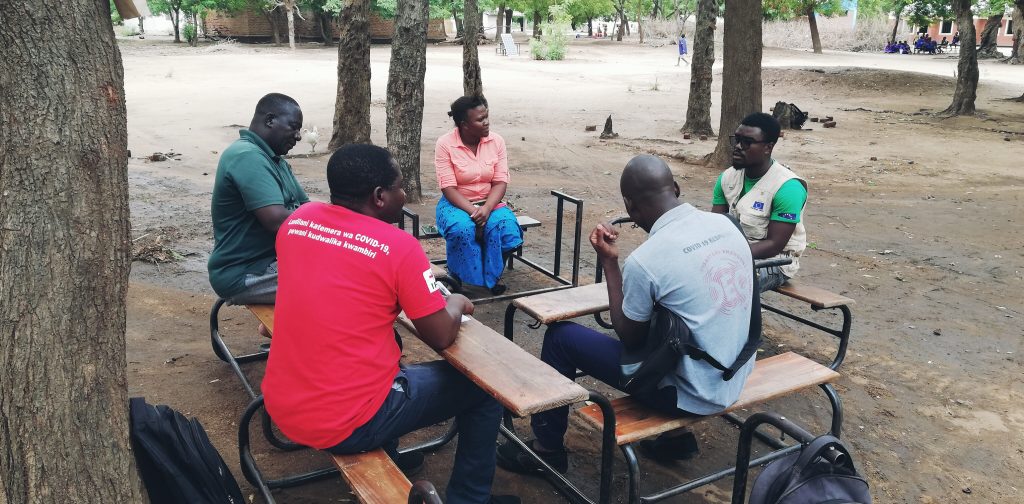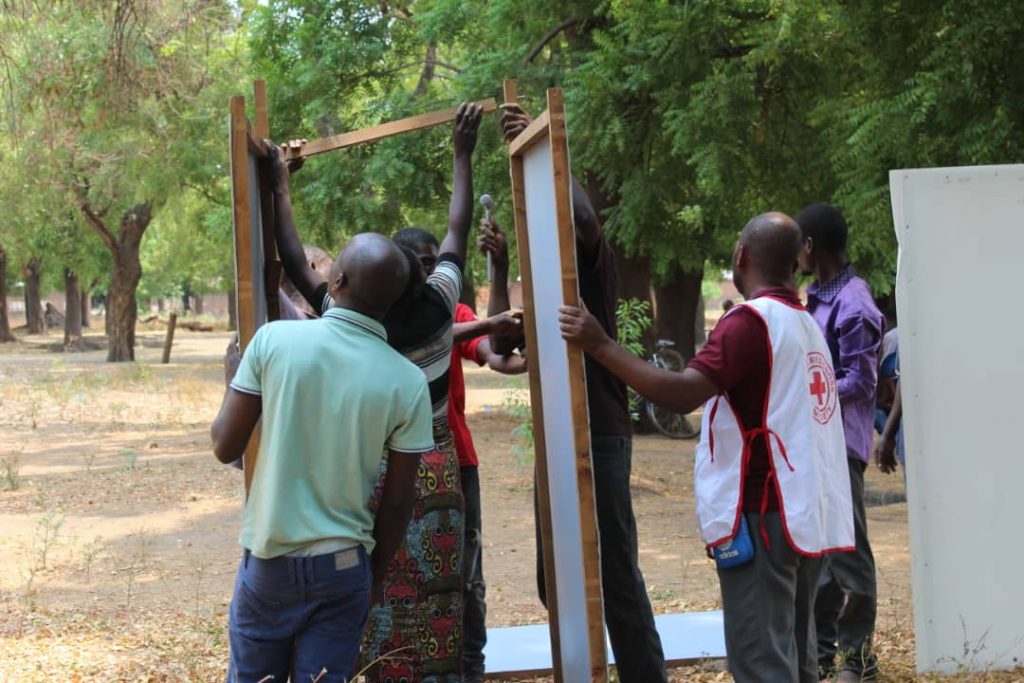When multiple responders operate in the same disaster-prone region, there’s always a risk of duplication (at best) and confusion (at worst). Concern Worldwide’s experiences in Malawi show how thinking differently about programme delivery can benefit all involved – and especially the people most affected by crisis.
Communities in the Nsanje district of southern Malawi have been affected by myriad natural hazards over the years, including catastrophic floods. When disaster strikes, we have observed multiple partners implementing their own response programmes, each working with stakeholders separately. The same is true in recovery and preparedness programmes. When each organization focuses only on their own goals and donor targets, it is difficult to effectively build resilience to disasters.

The Alliance in Malawi
Concern was the first organization to implement the Flood Resilience Measurement for Communities (FRMC) processes and approaches in Malawi – for more details, read our country briefing. As well as supporting the communities in implementing their identified interventions, it has helped to build partnerships and a collaborative working culture in Nsanje district. The first step taken was to map potential stakeholders that were present in the district, including government, local and international NGOs, civil society and community groups. Within the framework of the FRMC, and using forums such as the District Civil Protection Committee and District Executive Committee, the project began identifying and engaging with available stakeholders to build sustainable and impactful partnerships for providing more effective support to communities in building their resilience.
Further engagements included meeting with individual stakeholders, sharing with them the details concerning the project, community action plans, and the interventions that communities had identified and prioritised themselves. This significantly helped to align stakeholder objectives with the communities’ objectives, allowing synergies to be achieved by working together without compromising the partners’ own targets, budgets and timelines.
The sharing of key findings from the baseline study with these organizations, has provided evidence, built trust and established successful collaboration. This is most evident at the community level where the project is working in collaboration with relevant government departments and other non-governmental organizations.
By working together and escaping their silos, all organizations were able to reach a greater number of community members.
Wongani Kawonga, Concern Worldwide
Better together
The communities identified the importance of developing flood simulations and drills in order to improve their ability to respond as quickly and effectively as possible to flooding. Four organizations – Churches Action in Relief and Development (CARD), Malawi Red Cross, Cooperazione Internazionale (COOPI) and Concern Worldwide – teamed up with the district government to run the simulations jointly. This was achieved by sharing human resources, finances, technical expertise, transport, materials and in-kind contributions.
For example, the Malawi Red Cross had the expertise and materials required to lead flood simulation exercises, but no budget to cover transport or other costs. Other organizations arranged the loan of their vehicles and drivers so the exercise could be successfully carried out. By working together and escaping their silos, all organizations were able to reach a greater number of community members. Government officials now want to replicate this approach across the district, and are using the coordination and collaboration witnessed in the Alliance programme as a model for others to follow.

From response to resilience
Resilience building (“Build Back Better”) was another intervention identified by the communities during the FRMC process. For the successful and holistic implementation of this intervention, a number of steps needed to be taken. These include orientation of community policy implementers (such as local authorities, groups and civil society) and awareness and training of local tradespeople.
Partnerships enabled shared work between organizations targeting the common cause, with the Alliance project leading on orientation and awareness while CARD and Red Cross supported the training. Through these partnerships, innovative ways of planning and implementing activities are also being unlocked, as this sense of collaboration and partnership culture is also creating learning amongst partners.
At District level, contingency planning is crucial. However, while the project supported and participated in community level contingency planning sessions, it could not fully support the District contingency planning process due to financial limitations. Fortunately, the partnerships forged during the resilience-building project unlocked financial resources from other partners, with CARD eventually co-financing the activity.
The partnerships are also fostering a holistic system of working, through which different sectors (Health, Natural Resources, Agriculture, Disaster Risk Reduction Management, Education and Security) collaborate rather than work independently to help communities carry out anticipatory actions, and build resilience to floods and droughts. The current partnership approach is generating good results, including unintended positive ones. One notable achievement is that the ‘dependency syndrome’ that was persisting in the communities – which in the past had resulted in the undermining of the success of interventions, and duplicated efforts – is now being addressed.
The approach being used here in Malawi is harnessing the advantages of resource maximisation, and addressing the most pertinent needs of the communities. Working together, rather than in competition, is helping us achieve more, be more efficient, and build flood resilience more effectively. Consider using such a collaborative approach in your own work!

Gift Mwembe says:
Thanks for this article. Very articulative on the importance of collaboration in building flood resilience